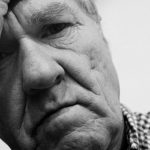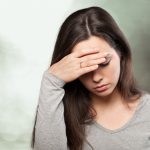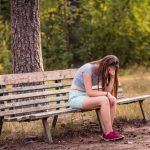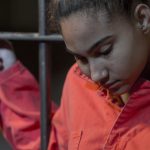Five First Nations Girls Commit Suicide in Just Nine Days

The ongoing and often unreported crisis in First Nations youth suicides has come into stark focus recently, as five girls under the age of 15 took their own lives over the nine day period ending on 11 January.
Rochelle Pryor died in hospital on 10 January, after having attempted to end her life on New Year’s Day. The 14-year-old Aboriginal girl’s suicide is believed to have been provoked by racist bullying that other children had subjected her to.
On the day following Rochelle’s death, a 12-year-old girl from a community close to Adelaide took her life. And on 3 January, a 15-year-old girl from Western Australia died in a Townsville hospital after self-harming two days prior.
Another 12-year-old girl took her life on 4 January in the Pilbara mining town of Port Hedland, while on 6 January, a 15-year-old girl from East Kimberley killed herself. And on 14 January, a 12-year-old Indigenous boy was put on life-support in a Queensland hospital after attempting to take his life.
And while this recent spate of First Nations youth suicides is an aberration, it certainly is in keeping with the continuing high levels of self-harm deaths amongst Aboriginal and Torres Strait Islander children.
A harrowing epidemic
Gerry Georgatos is the national coordinator of the National Indigenous Critical Response Service. He told Sydney Criminal Lawyers that the girls’ deaths are only the suicides that have been reported. And the number of Indigenous children who have taken their own lives this year is closer to ten.
“Over the last decade, First Nations children have comprised 25 to 30 percent of child suicides 17 years and less,” Mr Georgatos outlined. However, he added that over the last year, this rate has spiked to around 40 percent.
“Nearly one in two of all Australian suicides 17 years and less are now First Nations children,” the suicide prevention researcher continued. “And let’s remember that First Nations children comprise 5 percent of the Australian child population.”
Mr Georgatos explained that he responds to the majority of suicide-affected families nationally, so his figures are from the coalface. And moving on from that, he said that when it comes children under the age of 14 who commit suicide, Indigenous kids actually account for 80 percent of them.
Extreme deprivation
When asked what the crisis in Aboriginal and Torres Strait Islander children suiciding can be put down to, Georgatos makes clear it’s the “crushing poverty” in remote parts of the country, where the conditions are akin to those that are usually found in developing nations.
“Nearly, 100 percent of the First Nations suicide toll is of people living below the poverty line,” Mr Georgatos said, adding that the number of Indigenous people living above that line who kill themselves is almost negligible and much less than their non-Indigenous counterparts.
The suicide rate amongst the Indigenous community is over two and half times that found within the rest of the population. Australian Bureau of Statistics figures show that in 2017, self-harm accounted for 5.5 percent of First Nations deaths, compared to 2 percent of non-Indigenous deaths.
And according to Georgatos, this has a direct correlation with poverty rates, as around 14 percent of Australians are living below the poverty line, whereas 40 percent of Indigenous people are. “That’s two and a half times,” he explained. “It’s an absolute explanation as to why we have this disparity.”
Further barriers
Another key driver of the First Nations youth suicide rate is a lack of education. Mr Georgatos explained that in remote Aboriginal and Torres Strait Islander communities eight out of ten children don’t complete their high school education.
And he outlined that education can provide children with the ability to broaden their horizons and build a capacity for themselves in the world, while it leads to less suicide ideation and aberrant behaviour.
Mr Georgatos is also the national coordinator of the National Child Sexual Abuse Trauma Recovery Project. And he identified sexual assault as playing a factor in up to a third of Indigenous youth suicides.
Overincarceration
Aboriginal and Torres Strait Islander children grow up in communities that are discriminated against and often criminalised by Australian authorities. And these kids can become caught up in the criminal justice system at a young age.
On an average day in 2014, Indigenous young people – aged between 10 to 17 years old – were 28 times more likely to be in detention than non-Indigenous youths. And they were 18 times more likely to be under community-based supervision.
Last year, it was revealed that 100 percent of the youths in juvenile detention in the Northern Territory were First Nations children, while at that same time 47 percent of kids in NSW youth justice centres were Indigenous.
And right now, Aboriginal and Torres Strait Islander people are proportionately the most incarcerated people on earth. First Nations people account for 28 percent of the adult prisoner population, whilst they make up less than 3 percent of the overall populace.
Providing a future
Being a suicide researcher himself, Georgatos said he “wouldn’t take a dime” to carry out any more studies as enough research has already been conducted. He asserts that all the recommendations that need to be made have been, but they still simply haven’t been implemented.
The suicide prevention programs being run at present are “inauthentic”, he further remarked, as they are all about building resilience, without actually providing individuals at risk with improvements to their life circumstances.
“If we are going to reduce the disparity in the suicide toll between First Nations people and the rest of Australia, then we are going to have to reduce the poverty rates,” Mr Georgatos concluded. “There are no other ways forward.”







